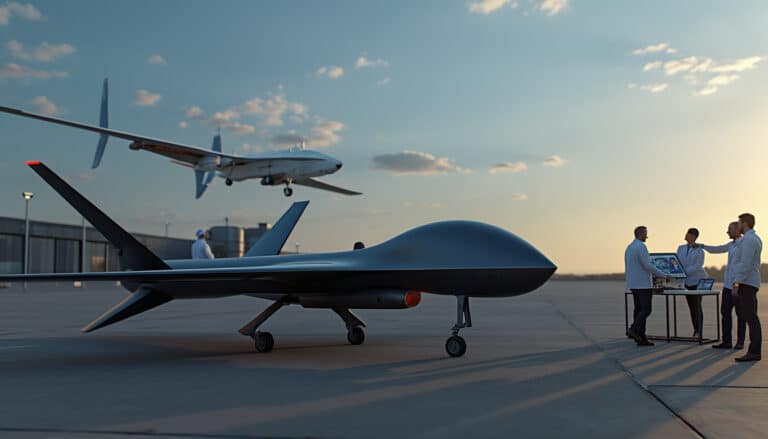In a strategic context of modernization of its air force, the Thailand made a bold decision by opting for the Saab JAS 39 Gripen E replacing its old ones F-16. This choice demonstrates not only a commitment to technological innovation, but also a desire to strengthen its air defense capacity in the face of contemporary challenges. The Gripen E, with its advanced features and proven effectiveness, stands out as an essential asset for the future of Thai aviation.

Thailand’s strategic decision to opt for Saab JAS 39 Gripen E as a new advanced fighter marks a crucial step in the modernization of its air forces. This choice is not limited only to replacing old ones F-16, but also reflects a desire to adapt to the contemporary challenges of the Asian sky.
Table des matières
ToggleNecessary modernization
The Thai Air Force has recently expressed the need to update its fleet, judging that the F-16 A/B no longer met current strategic requirements. Modern warfare requires aircraft capable of carrying out varied missions, ranging from air superiority to ground support. This is where the Gripen E, with its advanced features, comes into play.
Cutting-edge technology
THE Gripen E, designed by the Swedish manufacturer Saab, incorporates cutting-edge technologies that distinguish it from its predecessors. With a capacity of detection and of monitoring Improved electronics, this aircraft makes it possible to intercept and neutralize potential threats effectively. Furthermore, its electronic link Link16 and its SATCOM satellite communications system provide unparalleled coordination capabilities on the battlefield.
Strategic advantages
By choosing the Gripen E, Thailand is not just acquiring a new fighter. It also invests in a system that promotes regional cooperation and the tactical responsiveness. The Gripen E is renowned for its maneuverability, ability to operate in various types of environments and low operating cost. These elements play a key role in optimizing Thai military resources.
An international partnership
The choice of the Gripen E also opens the way to future collaborations with other countries using this aircraft. Thailand will be able to benefit from the exchange of expertise, joint training and supplies of spare parts, thus strengthening its intervention capabilities.
Geopolitical context and military concerns
Behind this decision lies a complex geopolitical context. Tensions in East Asia and the need for a strengthened defensive posture make the adoption of new military equipment all the more crucial. The Gripen E, with its improved performance, offers a tailored response to Thailand’s national security challenges.
International competition
Competition in the fighter market is intense. Although the United States has proposed F-16V In leasing, the Thai Air Force favored the Gripen E, thus highlighting a preference for a system that better meets their specific needs. The move could also have implications for military and diplomatic relations in the region.
In summary, the acquisition of Saab JAS 39 Gripen E by Thailand appears to be a wise choice in the context of the modernization of its military aviation. With cutting-edge technologies and advanced strategic capabilities, the Gripen E is much more than just a replacement for the F-16s. It is an essential asset for preserving the sovereignty and security of the country in a constantly evolving global context.
The #Saabinthesky image of the week proudly presents Saab Gripen E. The E version is the future fighter for the Swedish and Brazilian Air Force and in total 96 Gripen E/F have been ordered. Photo: Tim Jansson #Gripen #smartfighter #aviation #avgeek #airforce #military pic.twitter.com/Eo56aTO2GF
— Saab (@Saab) October 30, 2020























